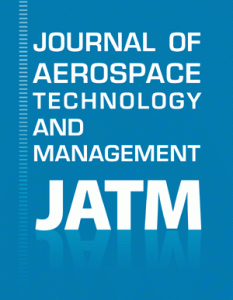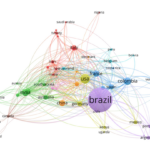By Julliane Silveira, scientific journalist, São José dos Campos, SP, Brazil
Some years ago, the United States Navy performed an electronic warfare training exercise. Unwittingly, they blocked the GPS signal was blocked in San Diego, California. What happened next? Cell phones stopped working, banks’ ATMs did not respond, air and sea traffic controllers lost their information systems.
The truth is that technology advances make people more and more dependent on GPS (global positioning system), even if they do not realize it. Signal interference can affect a lot of regular activities. For instance, GPS is used for the synchronization of financial operations, in energy distribution systems and in agriculture.
“They are critical systems for nations,” says Lester Faria, director of the Instituto de Estudos Avançados (IEAv), in Brazil, and lead author of the article “GPS Jamming Signals Propagation in Free Space, Urban and Suburban Environments” published in the Journal of Aerospace Technology and Management (vol. 10).
For this reason, it is necessary to understand the vulnerability of these systems to electronic attacks and interference. It is also important to determine their level of dependence. Having this in mind, the team of researchers from IEAv and ITA (Instituto Tecnológico de Aeronáutica) evaluated the work of GPS in several environments and the vulnerability of the system to various types of interference.
GPS signals propagation in urban environments are quite different from the ones in free space
Recent events made clear that intentional interference to GPS are real threats to both military and civilian systems. These potential vulnerabilities have been previously demonstrated in experiments (FARIA, SILVESTRE, CORREIA, 2016).
In this article, researchers have established formulas and propagation models to mitigate eventual attacks and avoiding jammers in complex environments, such as urban and suburban surroundings. “After some simulations, we indicate a modeling that can be applied in complex systems in order to prevent problems caused by jamming,” explains Faria.
Previous studies have used this concept to estimate the effectiveness of jamming signals in free-space. Some countries are already aware of this type of threat (ROYAL ACADEMY OF ENGINEERING, 2011), but the effects of the interfering signal propagation in different environments are not completely defined nor studied, leaving a gap in this kind of study.
“The article presented a modeling applicable to these environments and, through the results of the simulation experiments, it was concluded that the free space propagation model is incapable of sizing the interference efficiency in complex environments”, says Faria. “In this scenario, the risk is much more complex to calculate, but it can be well approximated by the model used in this article and the results presented,” he adds.
Researchers and developers of GPS-based systems can use these models to prevent interferences, both for day-to-day applications and to avoid problems in the country’s military security.
Although it began as a military project in the United States, four decades ago, GPS revealed itself as a crucial technology with broad applications that directly affect people’s lives. For this reason, studies that measure their vulnerability and propose measures to avoid problems and jamming are essential. From drones and military applications (weapons systems, missiles and projectiles guidance), to financial market and clock synchronization of cell-phones, GPS-based systems are part of everyone’s life.
References
FARIA, L.A., SILVESTRE, C.A.M. and CORREIA, M.A.F. GPS-Dependent Systems: vulnerabilities to electromagnetic attacks. J. Aerosp. Technol. Manag. [online]. 2016, vol. 8, no. 4, pp. 423-430, ISSN: 1984-9648 [viewed 10 July 2018]. DOI: 10.5028/jatm.v8i4.632. Available from: http://ref.scielo.org/8v4hyx
THE ROYAL ACADEMY OF ENGINEERING. Global navigation space systems: reliance and vulnerabilities. London: Royal Academy of Engineering, 2011 [viewed 10 July 2018]. Avaliable from: https://www.raeng.org.uk/publications/reports/global-navigation-space-systems
To read the article, access it
FARIA, L.A., et al. GPS jamming signals propagation in free-space, urban and suburban environments. J. Aerosp. Technol. Manag. [online]. 2018, vol. 10, e0618, ISSN: 1984-9648 [viewed 10 July 2018]. DOI: 10.5028/jatm.v10.870. Available from: http://ref.scielo.org/569stm
External link
Journal of Aerospace Technology and Management – JATM: <http://www.scielo.br/jatm>
Como citar este post [ISO 690/2010]:



















Recent Comments